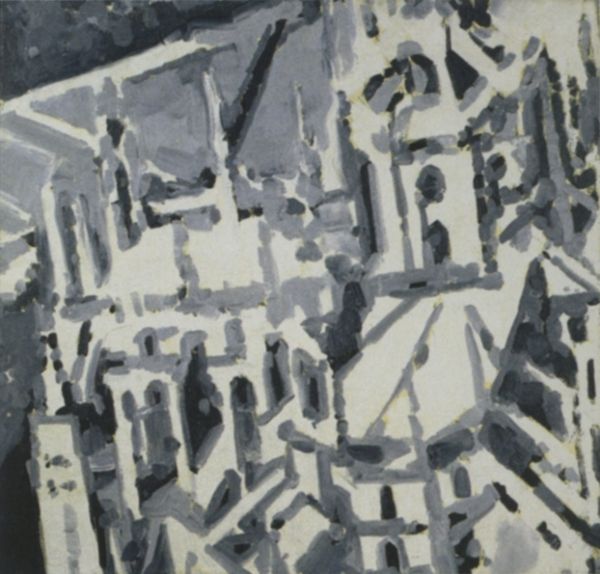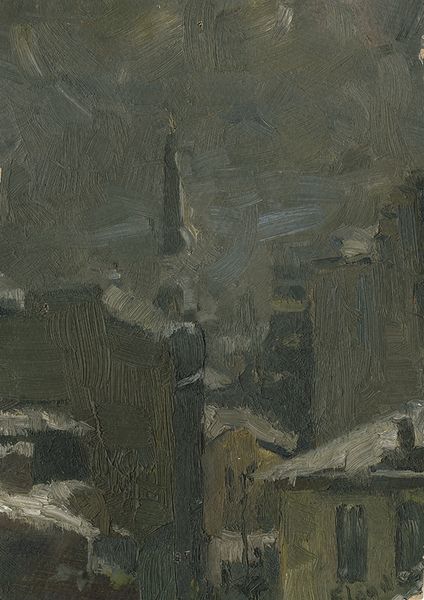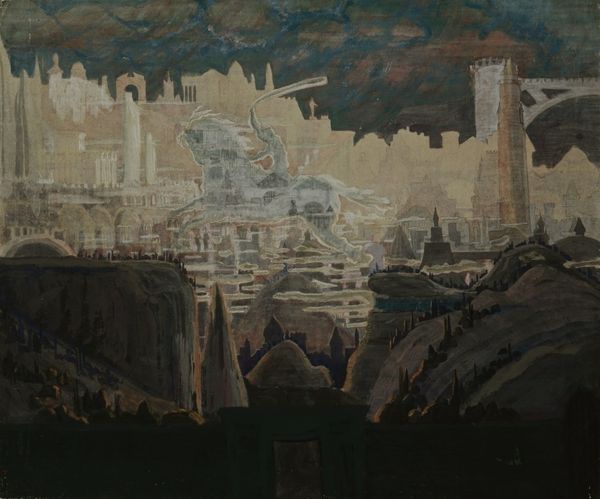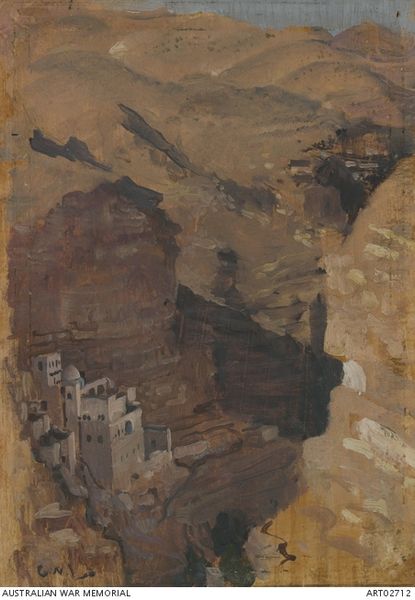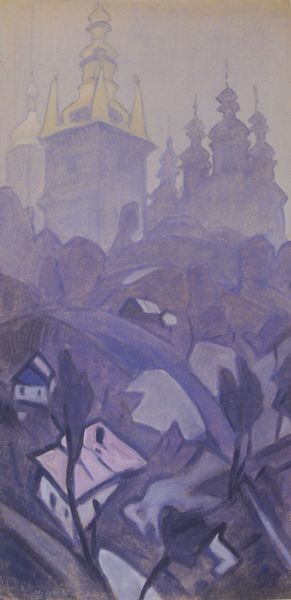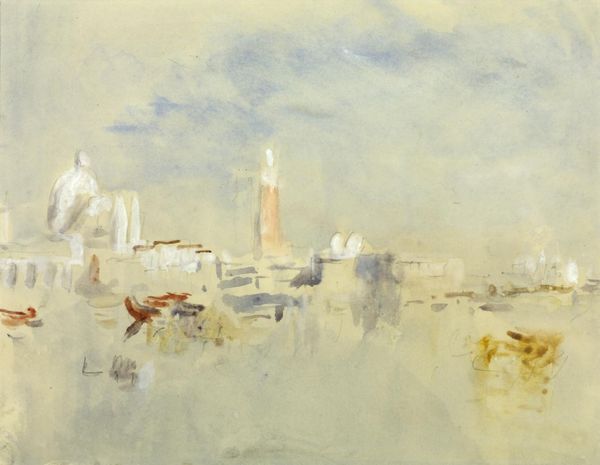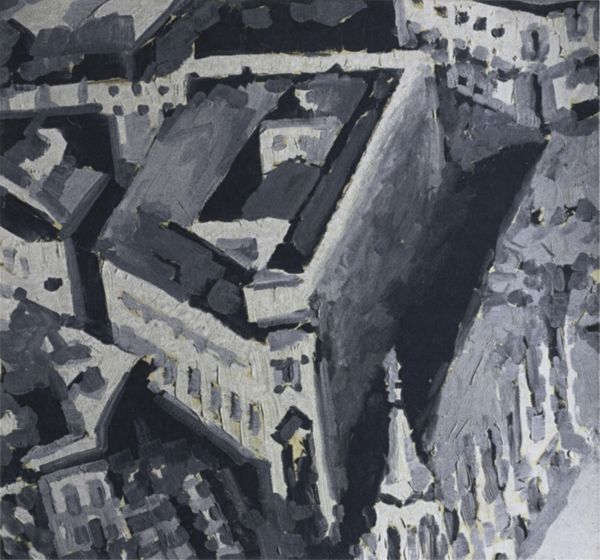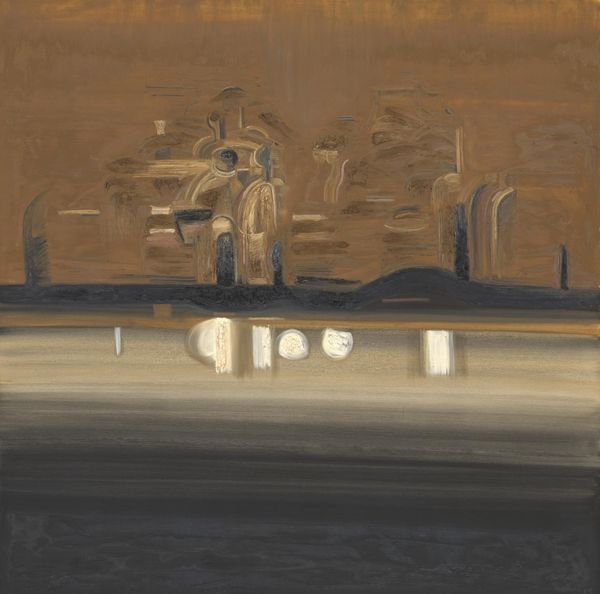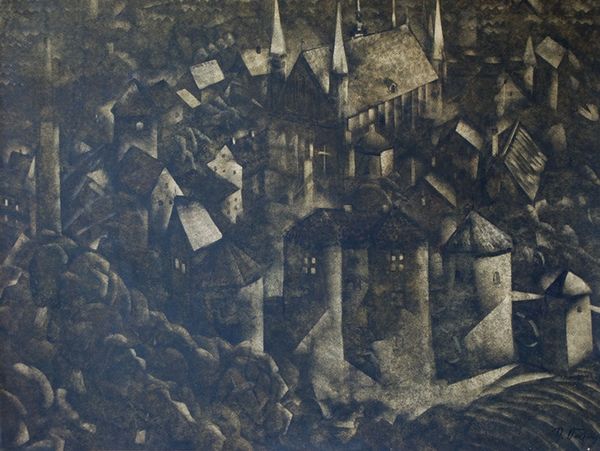
#
landscape
#
oil painting
#
geometric
#
symbolism
#
cityscape
#
watercolor
#
building
Dimensions: 36.8 x 30.5 cm
Copyright: Public domain
Curator: Looking at Mikalojus Konstantinas Čiurlionis’s “The City,” painted in 1908, one is immediately struck by the ethereal quality, achieved likely with watercolor or perhaps very thinly applied oil. Editor: My first impression is one of reverie and quietude, a dreamlike realm suspended in time. The limited palette adds to this sensation, with soft grays and whites dominating. It almost feels haunted. Curator: Čiurlionis was a Lithuanian artist known for his Symbolist works that blend painting and music. It’s worth mentioning he suffered from depression, even psychosis. His mental health and sociopolitical influences were extremely present in the Symbolist era. Editor: Absolutely. There’s something deeply unsettling about it too. The architecture feels monumental, almost oppressive. But then, given Čiurlionis’s own history and the sociopolitical tensions of early 20th-century Europe, that feeling of disquiet is perhaps intentional. Curator: Consider too the symbolic significance of the city itself as a recurring motif. Cities are often represented as spaces of both progress and alienation. Here we see rigid lines. Editor: The composition with its arches almost presents the city as if it's reflected in water or seen through some sort of warped lens. Is that sense of instability reflective of a deeper unease or questioning of societal foundations? The architecture becomes fragile instead of monumental. Curator: Symbolism used a new kind of imagery to express subjective emotion and was extremely prevalent in the 1880s-1910s. Artists felt it was necessary to turn away from naturalistic representation and create meaning through their choice of subject. Ciurlionis clearly took cues. Editor: Right, a move away from straightforward representation towards evoking feeling, addressing concerns like social reform and class struggle, the art begins a visual response that promotes equality for race, gender, and political preferences, ultimately critiquing the historical or modern conditions. I believe Čiurlionis does just that with his artwork. Curator: I’ll walk away thinking of what makes a city, and I will turn towards a larger consideration of human experience with urbanization. Editor: And I'm left thinking of our need for resilient structures to allow a bridge for the city, with the people it sustains and harms.
Comments
No comments
Be the first to comment and join the conversation on the ultimate creative platform.
